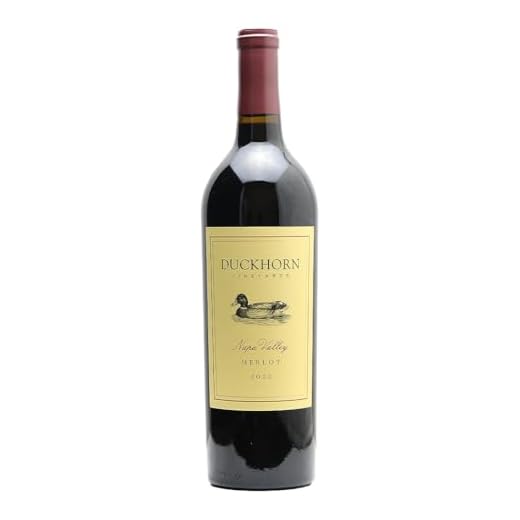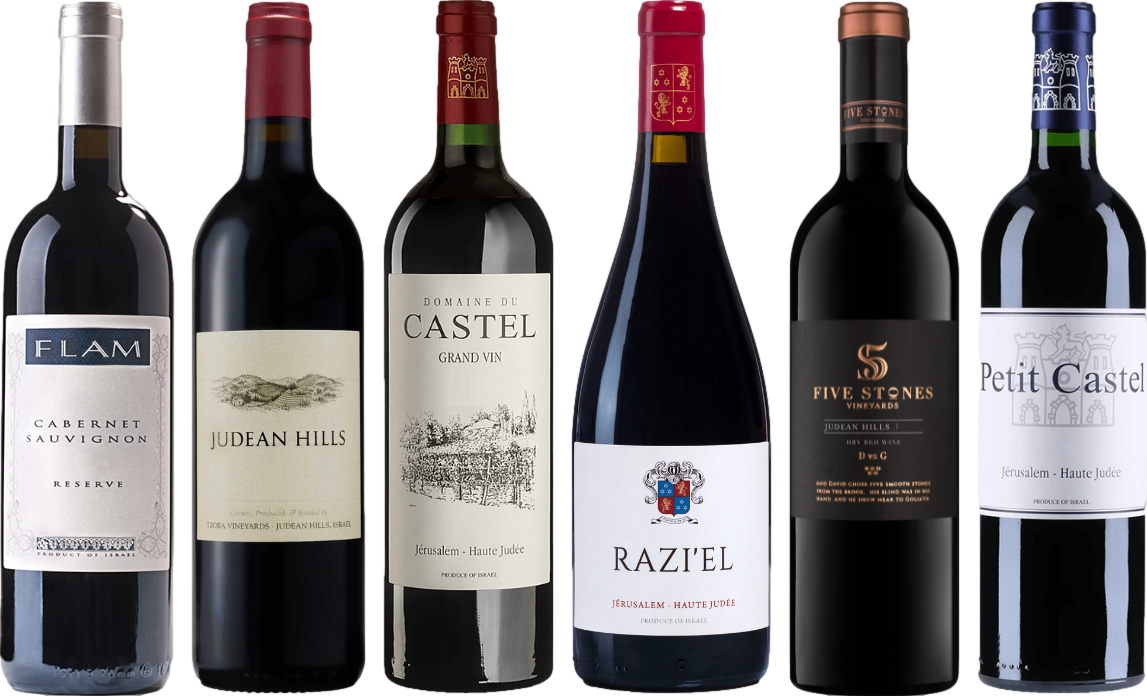



Opt for varietals such as Pinot Noir or Merlot if you’re seeking a smooth and approachable experience. These selections are versatile, pairing beautifully with a range of dishes from poultry to pasta. For a bolder choice, consider a Cabernet Sauvignon or Syrah, known for their rich flavors and structure, making them ideal companions for hearty meats.
Examine the label closely; a vintage year can significantly influence flavor profiles. Look for regions celebrated for their production, like Napa Valley or Bordeaux, as these areas often yield remarkable results. Pay attention to the alcohol content as well; higher levels may indicate a more robust flavor, while lower percentages might suggest a lighter profile.
Sampling options can also enhance your selection process. Attend tastings or visit local wine shops where knowledgeable staff can guide you through different profiles. Trust your palate–if a particular bottle resonates with you, that’s your best choice. Lastly, don’t shy away from experimenting with lesser-known varieties; they often provide exceptional quality at a fraction of the price.
Choosing Your Perfect Red
Begin with varietal characteristics; each grape type offers distinct flavors and aromas. For a bold experience, consider Cabernet Sauvignon, known for its rich body and dark fruit notes. If you prefer something softer and fruitier, Pinot Noir is an excellent choice, featuring bright red fruit and earthy undertones.
Examine the region of origin. Wines from cooler climates, like Burgundy or Oregon, typically exhibit brighter acidity and finesse, while those from warmer areas, such as Napa Valley or Australia, tend to be fuller-bodied and more robust. This geographical influence significantly impacts flavor profiles.
Pay attention to the vintage. A wine’s age can reveal much about its development; younger bottles often showcase fresh fruit, while older selections may present complex layers of flavor. Research specific vintages to understand the best years for your chosen varietals and regions.
Consider the occasion. A casual gathering might call for a versatile blend, while a formal dinner could merit a single varietal with more depth. Pairing with food also plays a critical role; robust dishes often complement bolder wines, while lighter fare may be best with something more delicate.
Lastly, trust your palate. Tasting is essential; visit local shops or wineries to sample different options. Keep notes on what you enjoy, and don’t hesitate to explore beyond familiar choices. Each bottle has a story waiting to be discovered.
Understanding Different Red Wine Varieties
Focusing on specific grape types is essential for selecting a bottle that fits your taste preferences. Cabernet Sauvignon offers a bold profile with dark fruit flavors and a hint of spice, making it ideal for grilled meats. Merlot, on the other hand, is softer and fruitier, often with notes of plum and chocolate, which pairs well with pasta dishes.
Exploring Notable Varieties
Pinot Noir is light-bodied, showcasing red fruit flavors like cherry and raspberry, and a great choice for poultry. Syrah, or Shiraz, provides a more robust experience with smoky undertones and dark berry flavors, perfect for heartier meals. Zinfandel is often fruit-forward with a peppery kick, complementing barbecue and spicy dishes beautifully.
Regional Influences
Don’t overlook the significance of the region. Wines from Bordeaux typically exhibit structure and complexity, while those from Napa Valley can be more fruit-driven and opulent. Italian varieties, like Chianti, bring acidity and earthiness, enhancing dishes rich in tomato sauce. Explore these differences to find what resonates with your palate.
Identifying Flavor Profiles for Your Preferences
Begin your exploration by recognizing the primary flavor categories present in various grape types. Each varietal carries distinct characteristics that can enhance your tasting experience. Below is a table summarizing common grape varieties and their typical flavor profiles:
| Grape Variety | Flavor Notes | Body |
|---|---|---|
| Cabernet Sauvignon | Blackcurrant, cedar, and spice | Full |
| Merlot | Plum, chocolate, and oak | Medium to Full |
| Pinot Noir | Cherry, raspberry, and earthy notes | Light to Medium |
| Syrah/Shiraz | Blackberry, pepper, and smoky undertones | Full |
| Zinfandel | Jammy fruit, spice, and pepper | Medium to Full |
Next, consider the balance of acidity, tannins, and sweetness. Higher acidity can be refreshing, while lower acidity provides a smoother mouthfeel. Tannins, derived from grape skins and seeds, create structure and can influence the wine’s aging potential. Wines with softer tannins are often more approachable for immediate enjoyment.
Pairing selections with food is crucial. For instance, a bold Cabernet Sauvignon complements rich meats due to its robust flavor and tannin structure. Lighter varietals like Pinot Noir pair well with poultry and earthy dishes, enhancing the overall dining experience.
Lastly, personal preferences play a significant role. Experiment with different styles and regions to discover what resonates with your palate. Whether you enjoy bold, fruit-forward wines or nuanced, earthy selections, there is a perfect match waiting for you.
Reading Labels and Terminology
Examine the label closely for key information that can guide your selection process. Look for the grape variety; this will often indicate flavor characteristics. Common varietals like Cabernet Sauvignon and Merlot each have distinct profiles, which can influence your choice based on personal preferences.
Region and Appellation
The region of origin significantly impacts the taste and quality. Terms like “Bordeaux” or “Napa Valley” denote specific areas known for particular styles. Within regions, appellations can signal stricter regulations on production and quality. A wine marked “AOC” (Appellation d’Origine Contrôlée) in France, for instance, adheres to rigorous standards, ensuring a certain level of craftsmanship.
Vintage Year
The year of production can provide insight into climate conditions during that season, which directly affects the flavor profile. Some years are heralded for exceptional quality. Researching vintage charts can help identify which years produced outstanding offerings from your chosen region.
Alcohol content is another crucial detail; higher percentages often suggest a fuller-bodied experience. Conversely, lower alcohol levels might indicate a lighter, more approachable selection. Tannins are worth considering as well; they can be identified by the terms “firm,” “soft,” or “smooth” on the label, impacting the wine’s structure and aging potential.
Finally, look for tasting notes on the back label, which can guide you toward flavors and aromas you might enjoy, such as “blackberry,” “chocolate,” or “spice.” This can be particularly helpful in aligning your selection with your taste preferences.
Exploring Food Pairings with Red Wine
When selecting a dish to accompany a full-bodied Merlot, consider a rich beef stew or grilled lamb. The tannins in the Merlot soften with the protein, creating a harmonious blend of flavors.
For a lighter Pinot Noir, roasted chicken or salmon pairs beautifully. The wine’s acidity complements the dish without overpowering it, enhancing the overall dining experience.
If you’re enjoying a Cabernet Sauvignon, opt for a charcuterie board filled with aged cheeses and cured meats. The robust flavors of the Cabernet will elevate the savory elements on the board, creating a delightful contrast.
Syrah, with its peppery notes, works well with barbecue dishes. The smoky flavors in the food resonate with the wine’s characteristics, providing a balanced palate.
For a Zinfandel, consider spicy dishes like chili or barbecue ribs. The fruit-forward nature of Zinfandel complements the heat, leaving a pleasant finish on the palate.
When indulging in a Malbec, beef tacos or a hearty pasta with red sauce can be excellent choices. The wine’s dark fruit flavors and velvety texture enhance the meal’s richness.
Experimenting with these combinations can lead to exciting discoveries, allowing the unique characteristics of each varietal to shine through in your culinary adventures.
Finding Quality Wines Within Your Budget
I recommend focusing on lesser-known regions and varietals to discover exceptional options at a lower price point. Regions like Portugal, Chile, and South Africa often produce outstanding bottles that won’t break the bank.
Strategies for Budget-Friendly Selections
- Explore wines from emerging countries. They often offer quality at a fraction of the price.
- Seek out wines from reputable producers with a history of quality but not necessarily high price tags.
- Consider purchasing wines from recent vintages; they can provide the same enjoyment as older ones without the premium cost.
- Attend local wine tastings or festivals to sample various bottles before committing to a purchase.
Utilizing Online Resources
- Use wine rating websites and apps to find recommendations tailored to your budget.
- Join wine clubs that focus on value selections, providing curated choices delivered to your door.
- Check for sales at local retailers or online stores; discounts can lead to discovering fantastic deals.
Incorporating these strategies will enhance your wine collection without overspending. Additionally, consider investing in equipment like a commercial pressure washer pump for maintaining your home wine storage area, ensuring optimal conditions for your treasures.








